Audi Q6 e-tron vs Hyundai i30 – Differences & prices compared
Two cars, one duel: Audi Q6 e-tron meets Hyundai i30.
Which one wins in performance, efficiency and value for money? Find out now!
Here’s where it gets real: The technical differences in detail
Costs and Efficiency: Price and efficiency are often the first things buyers look at. Here it becomes clear which model has the long-term edge – whether at the pump, the plug, or in purchase price.
Hyundai i30 has a clearly advantage in terms of price – it starts at 24000 £, while the Audi Q6 e-tron costs 54400 £. That’s a price difference of around 30437 £.
Engine and Performance: Power, torque and acceleration are the classic benchmarks for car enthusiasts – and here, some clear differences start to show.
When it comes to engine power, the Audi Q6 e-tron has a significantly edge – offering 516 HP compared to 140 HP. That’s roughly 376 HP more horsepower.
In acceleration from 0 to 100 km/h, the Audi Q6 e-tron is convincingly quicker – completing the sprint in 4.30 s, while the Hyundai i30 takes 9.60 s. That’s about 5.30 s faster.
In terms of top speed, the Audi Q6 e-tron performs slightly better – reaching 230 km/h, while the Hyundai i30 tops out at 197 km/h. The difference is around 33 km/h.
There’s also a difference in torque: the Audi Q6 e-tron pulls significantly stronger with 855 Nm compared to 253 Nm. That’s about 602 Nm difference.
Space and Everyday Use: Whether family car or daily driver – which one offers more room, flexibility and comfort?
Both vehicles offer seating for 5 people.
In curb weight, the Hyundai i30 is decisively lighter – 1291 kg compared to 2200 kg. The difference is around 909 kg.
In terms of boot space, the Audi Q6 e-tron offers distinct more room – 526 L compared to 395 L. That’s a difference of about 131 L.
In maximum load capacity, the Audi Q6 e-tron performs slightly better – up to 1529 L, which is about 228 L more than the Hyundai i30.
When it comes to payload, Audi Q6 e-tron hardly perceptible takes the win – 540 kg compared to 509 kg. That’s a difference of about 31 kg.
Our conclusion: The Audi Q6 e-tron proves to be dominates this comparison and thus becomes our DriveDuel Champion!
Overall, Audi Q6 e-tron is the better all-rounder in this comparison.
Audi Q6 e-tron
The Audi Q6 e-tron represents a significant step forward in the realm of electric vehicles, offering a perfect blend of cutting-edge technology and timeless design. With its spacious interior and advanced infotainment system, it provides both comfort and connectivity for the modern driver. The Q6 e-tron embodies Audi's commitment to sustainability without compromising on performance or luxury.
details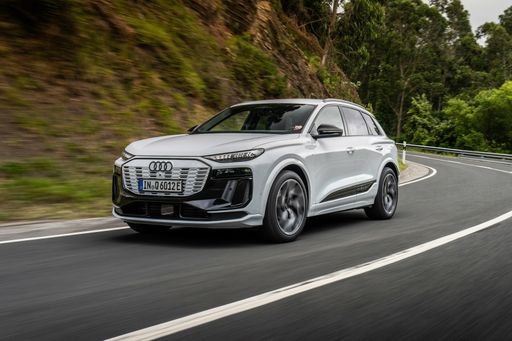 @ audi-mediacenter.com
@ audi-mediacenter.com
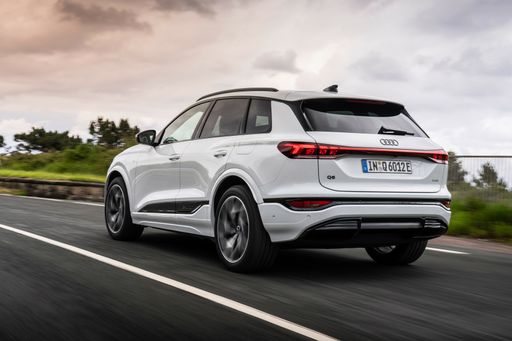 @ audi-mediacenter.com
@ audi-mediacenter.com
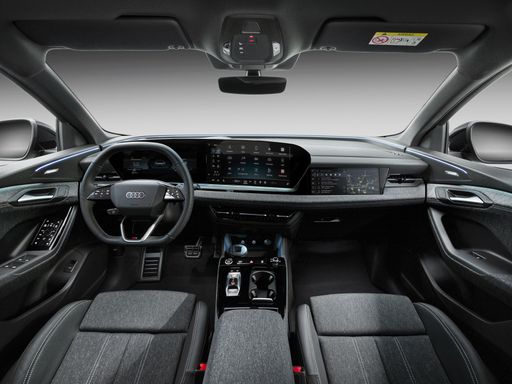 @ audi-mediacenter.com
@ audi-mediacenter.com
Hyundai i30
The Hyundai i30 stands out in the hatchback segment with its sleek design and modern features. It offers a comfortable ride with a well-crafted interior that caters to both driver and passengers. With its emphasis on safety and technology, the i30 provides a balanced driving experience suitable for urban and suburban environments.
details @ hyundai.news
@ hyundai.news
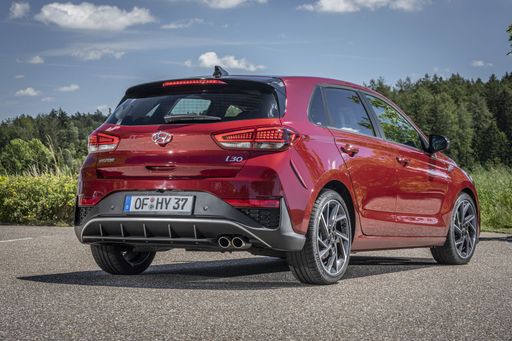 @ hyundai.news
@ hyundai.news
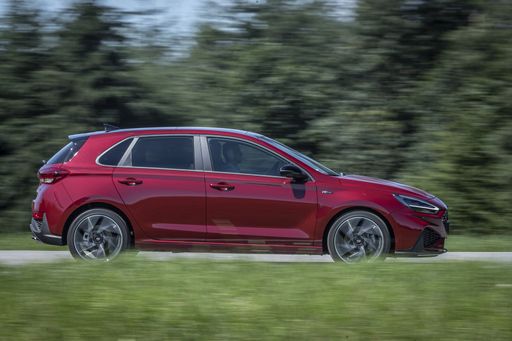 @ hyundai.news
@ hyundai.news
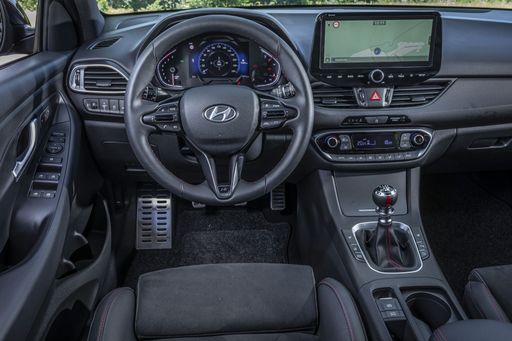 @ hyundai.news
@ hyundai.news
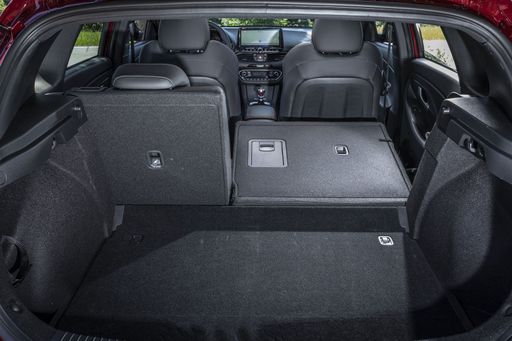 @ hyundai.news
@ hyundai.news

|

|
|
|
|
Costs and Consumption |
|
|---|---|
|
Price
54400 - 91900 £
|
Price
24000 - 29300 £
|
|
Consumption L/100km
-
|
Consumption L/100km
5.7 - 6 L
|
|
Consumption kWh/100km
15.6 - 18.9 kWh
|
Consumption kWh/100km
-
|
|
Electric Range
482 - 656 km
|
Electric Range
-
|
|
Battery Capacity
75.8 - 94.9 kWh
|
Battery Capacity
-
|
|
co2
0 g/km
|
co2
130 - 136 g/km
|
|
Fuel tank capacity
-
|
Fuel tank capacity
50 L
|
Dimensions and Body |
|
|---|---|
|
Body Type
SUV
|
Body Type
Hatchback
|
|
Seats
5
|
Seats
5
|
|
Doors
5
|
Doors
5
|
|
Curb weight
2200 - 2425 kg
|
Curb weight
1291 - 1407 kg
|
|
Trunk capacity
499 - 526 L
|
Trunk capacity
395 L
|
|
Length
4771 mm
|
Length
4340 mm
|
|
Width
1939 - 1965 mm
|
Width
1795 mm
|
|
Height
1665 - 1685 mm
|
Height
1455 mm
|
|
Max trunk capacity
1361 - 1529 L
|
Max trunk capacity
1301 L
|
|
Payload
540 kg
|
Payload
463 - 509 kg
|
Engine and Performance |
|
|---|---|
|
Engine Type
Electric
|
Engine Type
Petrol, Petrol MHEV
|
|
Transmission
Automatic
|
Transmission
Manuel, Automatic
|
|
Transmission Detail
Reduction Gearbox
|
Transmission Detail
Manual Gearbox, Dual-Clutch Automatic
|
|
Drive Type
Rear-Wheel Drive, All-Wheel Drive
|
Drive Type
Front-Wheel Drive
|
|
Power HP
252 - 516 HP
|
Power HP
100 - 140 HP
|
|
Acceleration 0-100km/h
4.3 - 7.6 s
|
Acceleration 0-100km/h
9.6 - 13.1 s
|
|
Max Speed
210 - 230 km/h
|
Max Speed
178 - 197 km/h
|
|
Torque
450 - 855 Nm
|
Torque
172 - 253 Nm
|
|
Number of Cylinders
-
|
Number of Cylinders
3 - 4
|
|
Power kW
185 - 380 kW
|
Power kW
74 - 103 kW
|
|
Engine capacity
-
|
Engine capacity
998 - 1482 cm3
|
General |
|
|---|---|
|
Model Year
2024 - 2025
|
Model Year
2024
|
|
CO2 Efficiency Class
A
|
CO2 Efficiency Class
D, E
|
|
Brand
Audi
|
Brand
Hyundai
|
What drivetrain options does the Audi Q6 e-tron have?
Available configurations include Rear-Wheel Drive or All-Wheel Drive.
The prices and data displayed are estimates based on German list prices and may vary by country. This information is not legally binding.
